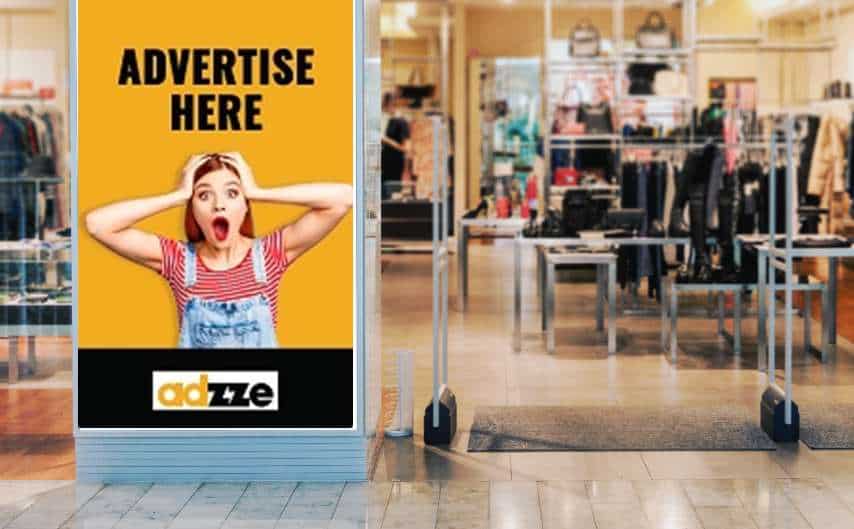The As Mall Business Advertising Agency: Why In-Hand Media Beats Mall Banners for Building Trust
In today’s noisy advertising ecosystem, small businesses are under pressure to do more with less. Mall banners, once seen as a prestige placement, are now being questioned for their actual impact — especially when compared to more tactile, immersive options. The real question small brands should be asking isn’t how big the ad is, but how close it gets to the consumer.
This is where the as mall business advertising agency needs to rethink the game — by shifting from visibility to trust, from banners to in-hand engagement.
The As Mall Business Advertising Agency Must Prioritize Attention, Not Just Exposure
Mall banners are hard to miss — towering, flashy, and strategically located. But what happens when visibility doesn’t translate to memory, emotion, or action? In reality, many shoppers ignore overhead ads as visual clutter. They’re walking, talking, browsing. Their eyes glance up, but their brain rarely logs the message.
On the other hand, in-hand media such as branded coffee sleeves, shopping cart ads, placemat ads, or QR-activated tray liners are used, held, and often kept. That tactile contact fosters greater sensory encoding — a well-documented psychological phenomenon that boosts memory and brand affinity.
For the as mall business advertising agency to evolve, its tactics must pivot toward formats that embed the brand into the customer’s personal experience.
In-Hand vs. Overhead: Where Mall Banners Fall Short
Let’s break it down:
Criteria | Mall Banners | In-Hand Media |
Visibility | High (but passive) | Medium (but personal) |
Engagement | Low | High |
Trust-Building | Impersonal | Tactile and contextual |
Cost Efficiency | Expensive | Affordable |
Attribution | Difficult to track | Easy via QR codes, redemptions |
This isn’t about removing mall banners from the toolkit entirely. It’s about proportional investment — and recognizing where the ROI actually lies.
Why the As Mall Business Advertising Agency Should Go Local and Tactile
Consumers today crave authenticity and relevance. A large, general mall banner might display a brand — but it doesn’t place the brand meaningfully in a customer’s day.
In contrast, a branded coaster in a nearby food court café, or a flyer embedded in a shopping cart’s handle, meets the consumer during a moment of pause — when they’re more likely to reflect and absorb.
For the as mall business advertising agency, this creates opportunities to connect in:
Food courts (tray liners, table toppers)
Retail cafés (coffee sleeves, coasters)
Lounge areas (magazine inserts, branded sanitizing stations)
Elevators or escalators (tactile handrails, QR sticker prompts)
Each of these touches the consumer in context, building familiarity with the brand during slower, more receptive moments.
The Psychology Behind Touch-Based Trust
Why does this matter so much?
According to neuromarketing studies, physical interaction with branded objects increases emotional impact and brand recall. Consumers who touch a brand — even indirectly — rate it as more trustworthy and memorable than those who merely view it.
This means that a small business ad on a placemat or pizza box may generate deeper psychological resonance than a 20-foot banner hanging from the mall ceiling.
So, for the as mall business advertising agency, it’s time to ask: Do we want to be noticed, or remembered?
In-Hand Media Formats That Outperform Mall Banners
Here are five in-hand formats where the as mall business advertising agency can shine:
Coffee Sleeves
Delivered with every purchase, held for 15–20 minutes. Add a QR code with a time-sensitive offer and track conversions instantly.
Shopping Cart Ads
Spotted and touched throughout the customer’s shopping journey — and a great way to target parents, seniors, or weekly grocery regulars.
Placemat Ads
Placed in food courts, mall cafés, or quick-service restaurants. Low distraction and long dwell time make these ideal for thoughtful messaging.
Branded Pharmacy Bags
Perfect for wellness, beauty, or healthcare-related small businesses operating inside or near malls.
Sanitizing Stations
With the rise of hygiene awareness, these get high visibility and tactile use. Wrap them in brand colors and messaging with QR-led offers.
These strategies don’t just save budget — they bring the brand into consumers’ physical space. That’s emotional real estate banners can’t reach.
Measuring What Mall Banners Can’t
In-hand media also beats mall banners on accountability. Smart print strategies allow the as mall business advertising agency to track:
QR scans per location
Coupon code redemptions
Unique URLs per format
Walk-in spikes tied to in-hand media drops
When small businesses can connect impressions to action, they feel empowered — not just advertised.
What Brands Lose with Banner-Only Thinking
Every dollar spent on mall banners is a dollar not invested in something more personal, more measurable, and more memorable. For a small business working with limited media dollars, this is the opportunity cost they can’t afford to ignore.
Without tactile strategies, they lose:
Brand intimacy
Micro-location relevance
Conversion tracking
Real-life retention
And in a world where attention is currency, these losses are steep.
Final Thoughts: The As Mall Business Advertising Agency Needs to Think Small — and Smart
Success in small business advertising isn’t about making noise. It’s about building trust — quietly, repeatedly, and personally. In-hand formats like coffee sleeves, coasters, and tray liners may seem simple — but they put your brand exactly where it needs to be: in the hand of the consumer, in the right moment.
Mall banners might hover above. But in-hand media sticks.






